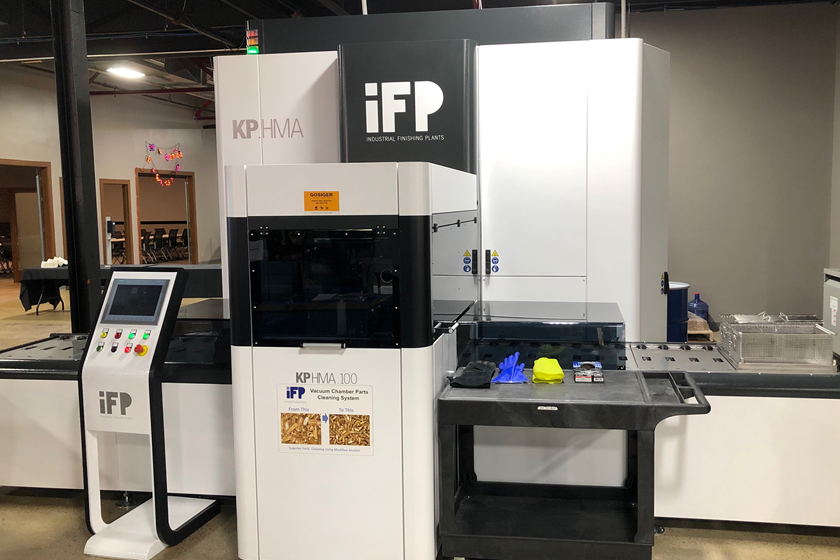Finding What Causes Defects in Ecoat Systems
The first step in solving defects in ecoat, says Axalta’s Joe Subda, is to determine if the defect is on all parts, one part, or a certain type of part or substrate.
#asktheexpert
Q: What can our facility do about a lot of defects in our electrocoat process? Is there an area of the system we should be looking at first?
A: I get many questions about defects. People will show me a defect on a part, a picture of a defect or simply describe the defect. Then I am asked the inevitable question — what is the defect and where is it from? This is followed by — how can it be eliminated? I can usually identify the type of defect and its possible origins, but I prefer to teach and show people how they can solve the problem. This approach can put some people off, but usually it ends up making the person smarter, better at their job and I get another friend.
Featured Content
First, determine if the defect is on all parts, one part or a certain type of part or substrate. If the defect is on all the parts, the cause is usually in the system pretreatment, ecoat paint or ecoat oven. If the defect is only on one part or type of part or substrate, it could be the part, but it might also be something in the system affecting the part. The cause can be determined initially by dividing the system into the pretreatment, ecoat and the oven, and running parts only through certain sections. This method can be done with panels, if the defect can be duplicated on panels. This process requires at least six parts and more is better.
Step 1: Place three of the parts on the line prior to pretreatment, normal process.
Step 2: Clean three of the parts and put on the line between pretreatment and ecoat. It is best to place the cleaned parts on the same rack as the parts that were put on prior to pretreatment.
Step 3: Remove one of the normal process and cleaned parts between the exit of the ecoat system and the oven. Bake these parts in a different oven.
Step 4: Review the parts to determine which of the parts has the defect.
Step 5: Determine which section of the system causes the defect.
If all the parts display the defect, the ecoat system is causing the defect. If the parts that only ran through pretreatment have the defect, pretreatment is causing the problem. If the parts that ran through a different oven don’t have the defect, but the other parts do, the defect is originating in the ecoat oven. Once it is determined which part of the system is causing the defect, the same method can be used to further pinpoint the cause of the defect. Parts can be run through the pretreatment or ecoat system, bypassing certain sections to determine the origin of the defect. The pretreatment system can be divided up into cleaner, conditioner, phosphate and post rinses. The ecoat system can be divided up into the ecoat tank and rinses. When the section that causes the defect is determined, review the chemistry, pumps and sprays for that section.
Generally, one or more of these items are out of specification and causing the defect. I know this sounds almost too simple, but I have used this method and variations of this method to successfully solve many problems.
Q: How can I tell if my oven is out of balance?
A: You didn’t state what type of oven, so I am going to assume that the oven is a straight-through design with multiple zones. One of the easiest methods is to observe the direction of air flow and presence of smoke at the oven entrance and exit.
Smoke or air flowing out the entrance and exit of the oven is a sign that an oven is not balanced. It indicates that the oven has positive air pressure, too much fresh air or not enough exhaust. Air flowing into the exit and entrance of the oven is another sign the oven is out of balance and indicates a negative air pressure, not enough fresh air or too much exhaust. The oven should be at a neutral air pressure to the surrounding environment. If the oven has a positive air pressure to the surrounding environment, then smoke and heat flow out of the oven. An oven at a negative air pressure will have dirt and contaminant flowing into the oven along with the air.
Smoke or air flowing out one end of the oven while air is flowing into the other end is another indication the oven is out of balance. This condition indicates part of the oven has positive air pressure and the other part is at negative air pressure, and can cause zone temperature control issues as heat from one zone or zones can be drawn into the others.
The oven is also out of balance if the temperature recorder shows one side of the oven is at a different temperature than the other side, either in one zone or multiple zones. The side-to-side temperature difference indicates there is an air flow difference from side to side, which can cause cure issues.
Joe Subda is a senior product specialist for Axalta Coating Systems. Visit axaltacs.com.
RELATED CONTENT
-
Blistering Defects and How to Avoid Them
Verney Denerville of TIGER Drylac discusses recommendations for avoiding or mitigating blistering defects in powder coatings.
-
Improving Transfer Efficiencies in Coating Operations
There are many methods for addressing electrostatic grounding in metal painting processes, and Tim Ulshafer from Mueller Electric says the best method for your process is a simple and worthwhile exercise.
-
Removing Cured Powder Coatings
Question: What methods are available for removing cured powder coatings, and what are the pros and cons of these methods?


















